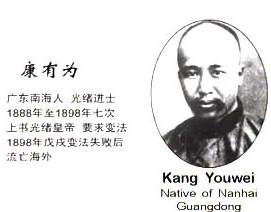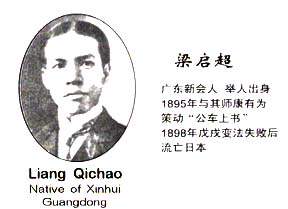 |
|
Troubled Times at the Beginning of the Century (2)
The Dark Political Situation  |
|
|
 This was a commanding view of Beijing obtained from the top of the Jingshan Hill. The political centre of the Qing Dynasty displayed imposing dignity in a tranquil atmosphere. The Manchus in northeast China had crossed the Shanhaiguan Pass of the Great Wall, captured the capital city and established their reign here 256 years before. This was a commanding view of Beijing obtained from the top of the Jingshan Hill. The political centre of the Qing Dynasty displayed imposing dignity in a tranquil atmosphere. The Manchus in northeast China had crossed the Shanhaiguan Pass of the Great Wall, captured the capital city and established their reign here 256 years before.
On January 24, 1900, the Qing government issued an imperial edict, designating 15-year-old Pu Jun as the crown prince.
This was a signal given to dethrone Guangxu, arousing general concern of public opinion in China and abroad. The decision was plotted by Empress Dowager Cixi. After she began to hold court from behind a screen in 1873, she remained the actual ruler of the country. She caused the loss of large tracts of China's border territory.
The nominal emperor Guangxu was deprived of his freedom. He was put under house arrest at Yingtai, Zhongnanhai to the west of the Forbidden City. For more than one year, he paid respects to the Empress Dowager as his main activity every day.
Emperor Guangxu (Aisin-Gioro Zaitian), born in 1870, enthroned in 1874 at the age of 4 as the 8th emperor of the Qing Dynasty
He had to kneel before the Empress Dowager and listened to her reprimand for a long time. The only thing the emperor in his thirties dared to do was to vent his grievances on his servants. He paid a high price for the reform he had initiated on impulse two years before.
This is the earliest photo of the Forbidden City we can find now. It was taken in 1898, the 24th year of the reign of Guangxu. In those days, there was popular enthusiasm for carrying out reform and making the country powerful. After the defeat of the Sino-Japanese War of 1894-1895, the government and the public were overwhelmed by depression. People of insight called for reform.
 Kang Youwei and his student Liang Qichao were well-known leaders of the reformists. Taking advantage of the metropolitan examination, they allied themselves with others to petition the emperor and call for institutional reform. Guild halls established in Beijing by people from other parts of the country served as places where they had meetings and propagated institutional reform. In their articles published in newspapers and periodicals, they warned their compatriots that without institutional reform, the country would be conquered and the people would be destroyed. The commentaries on current events written by Kang Youwei and Liang Qichao were popular among the people. The reformists' call for institutional reform affected the young Emperor Guangxu. Determinedly he ordered an institutional reform. Kang Youwei and his student Liang Qichao were well-known leaders of the reformists. Taking advantage of the metropolitan examination, they allied themselves with others to petition the emperor and call for institutional reform. Guild halls established in Beijing by people from other parts of the country served as places where they had meetings and propagated institutional reform. In their articles published in newspapers and periodicals, they warned their compatriots that without institutional reform, the country would be conquered and the people would be destroyed. The commentaries on current events written by Kang Youwei and Liang Qichao were popular among the people. The reformists' call for institutional reform affected the young Emperor Guangxu. Determinedly he ordered an institutional reform.
On June 11, 1898, Emperor Guangxu issued an imperial edict for institutional reform. In a short span of 103 days, he issued more than 180 imperial edicts for institutional reform. One day, he issued 11 such edicts. The vigorous reform movement enraged Empress Dowager Cixi residing in the Summer Palace. With the support of conservative ministers at court, Cixi hurried back to the Imperial Palace to stage a coup and announced that she would hold court herself to handle state affairs. Emperor Guangxu was put under house arrest. The last chance for the Qing Dynasty to carry out reform on its own initiative was destroyed.
In late autumn that year, a tragic atmosphere prevailed over the capital of the country. Tan Sitong, Yang Shenxiu, Kang Guangren and three others were executed at Caishikou
The institutional reform is known in history as the Hundred Day Reform. At the beginning of the 20th century, China sank into the darkest period politically. After the failure of the Reform Movement of 1898, Kang Youwei, Liang Qichao and others fled abroad from Tianjin. Many reformists went southward to Shanghai. In those days, Shanghai seemed to be a free haven.
|
|
|
|
|
|
|
 |









